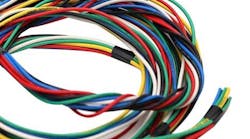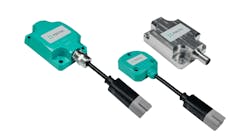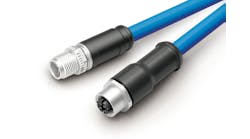As the Industrial Internet of Things (IIoT) continues to gain mindshare and acceptance, the roles of the cables, connectors and wires that move the data become more important. Our panel of experts addresses what you need to keep in mind when deciding wire size, including the effects of temperature and power.
Wire size can be dictated by ampacity, but is often prescribed by the end user. Since today's PLCs need only a few mA to change an input state, does it still make sense to use 14 AWG signal wire, or are there other options? How do temperature and power requirements affect this decision?
The energy dissipated in the wire will cause a temperature rise, but the heat will also be given to the environment. The type of insulation determines the amount of thermal isolation. It also determines the maximum temperature allowable. Variables such as cable length, whether or not the cable is shielded, where and how the cable is routed, what other types of devices are nearby, ambient temperature and price need to be considered in choosing the right gauge and cable jacket for the application.
Resistance increases with temperature and exhibits the possibility of limiting small control currents. In addition, if the run is extremely long, the impedance will increase, potentially causing EMI-induced faults. The same happens when signal wires are run next to high-voltage ac conductors.











